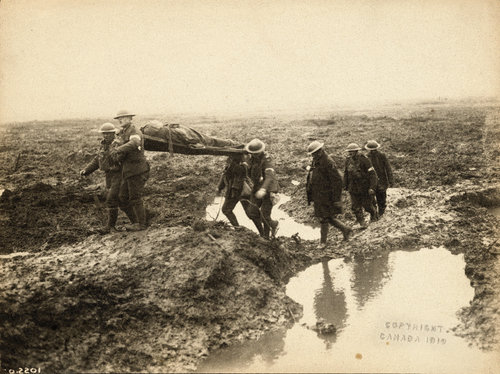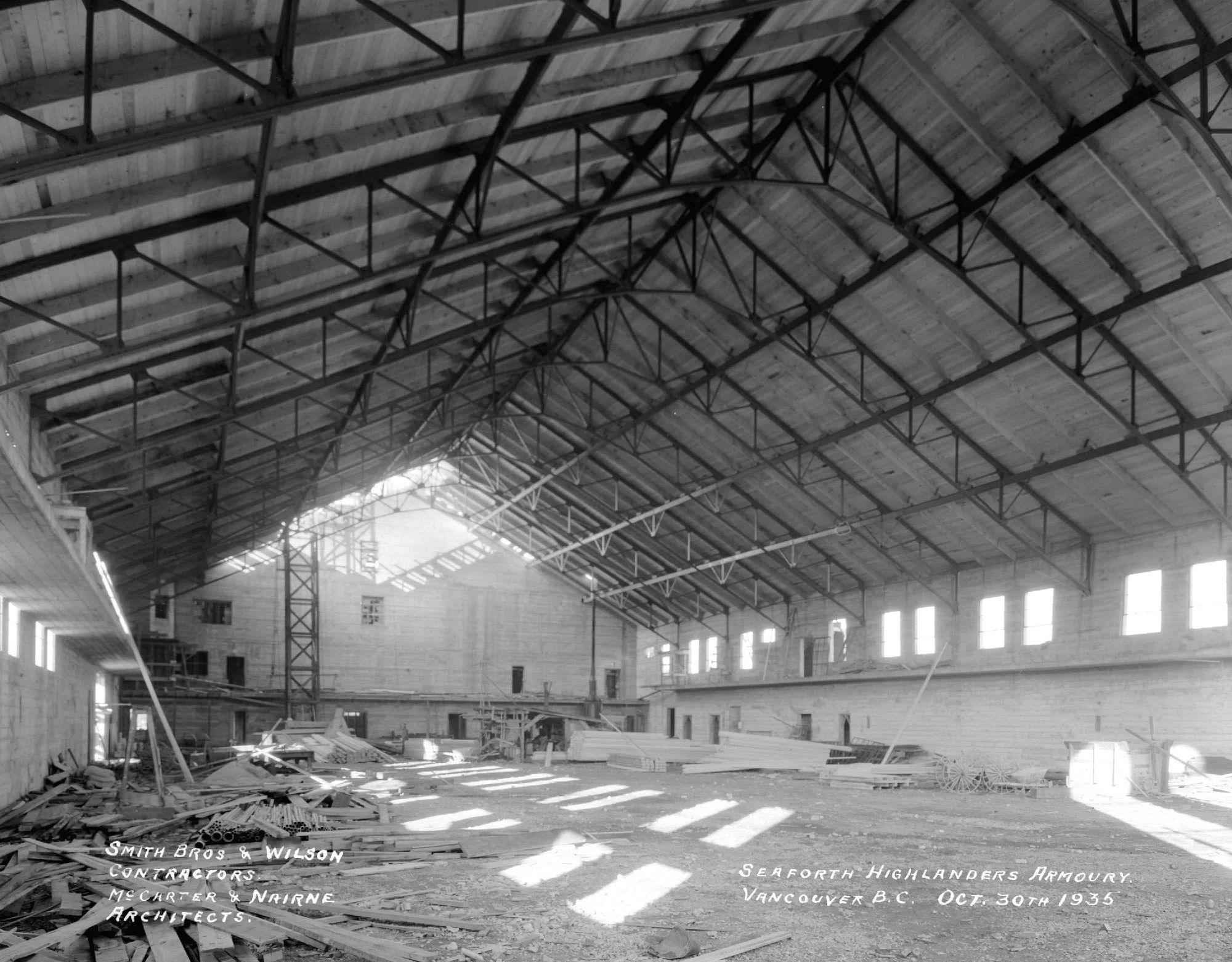A Brief History of the Regiment
Regimental Colour
The Seaforth Highlanders of Canada
Colonel-in-Chief: His Royal Highness The Prince Philip Duke of Edinburgh.
Badge
A stag's head caboshed proper the antlers encircling a Letter "L" Or ensigned by the coronet of a younger son of the Sovereign proper all above a scroll Gules edged and inscribed CUIDICH'N RIGH in letters Or. The badge is modelled on that of the Seaforth Highlanders of the British Army. The cypher is that of Leopold, Duke of Alabany (1853-1884), fourth son of Queen Victoria, ensigned by his coronet.
Motto
CUIDICH'N RIGH (Help the King)
March
"The Piobaireachd of Donald Dhu"
Regimental Badge
Camp Flag
The Beginning [1909-1912]
The Seaforth Highlanders of Canada was officially established on November 24, 1910 by a group of Vancouverites of Scottish descent. Upon official affiliation with the Seaforth Highlanders of the British Imperial Army, the "72nd Highlanders of Canada" was redesignated the "72nd Seaforth Highlanders of Canada" on April 15, 1912 and the "72nd Regiment Seaforth Highlanders of Canada" on December 16, 1912. The Regiment received its first stand of colours from the Governor-General, HRH the Duke of Connaught, in 1912.
World War I [1914-1918]
At the outbreak of World War 1, the eager young Regiment offered itself for overseas service. The offer was refused until 1916; a total of 41 officers and 1,637 other ranks were drafted to other Canadian infantry units, in particular the 16th Battalion CEF. The Regiment perpetuated the 72nd Battalion which would later be attached to the 12th Brigade, 4th Canadian Division, and the 231st Battalion, which provided reinforcements for the Canadian Corps in the field.
In 1916, however, the Regiment sailed for France as the 72nd Battalion CEF, and very soon Seaforths were committed to battle. The 72nd quickly gained a reputation among friend and foe for its professional conduct, and particularly, for patrolling and aggressive trench raids.
The Regiment paid a heavy cost in blood during its numerous actions in the war. At Vimy Ridge, the 72nd helped spearhead the attack that won Canadian troops their reputation as the finest shock troops on the Allied side - but after the battle, only 11 officers and 62 men remained. The battle of Passchendaele saw the Regiment advance, before dawn, up a gully waist deep in mud in the pouring rain to capture its objective - which British generals had assessed as requiring a full Division of 15,000 soldiers.
When the veterans returned to Vancouver they brought with them sixteen battle honours. This recognition of courage did nothing to dispel the fact that, of the 3,791 officers and men who served as Seaforths during the war, 2,515 of them became casualties.
The Regiment received its second stand of colours from Lt. Gen Sir Arthur Currie on April 1, 1919. Redesignated "The Seaforth Highlanders of Canada" on September 15, 1920, the Regiment forged ahead in efficiency during the inter-war period and was selected to become a part of the 1st Canadian Division. Upon the start of the Second World War, the Regiment was mobilized as "The Seaforth Highlanders of Canada, C.A.S.F." and embarked for the United Kingdom on the December 22, 1939.
The Twigge Family home served as Regimental Headquarters from 1920-1936 before the construction of The Seaforth Armoury.
World War II [1939-1945]
Stationed in England for the next three years, the Seaforths primarily carried out coastal defence tasks while training to join the fight. The Regiment’s baptism of fire came on the July 10, 1943, in the Operation HUSKY landings in Sicily. Before the Sicilian campaign was complete, the Seaforths had added Leonforte, Agira, and Adrano to their list of battle honours.
It was at the town of Ortona on the east coast of Italy in December 1943 that the Seaforths achieved their most lasting fame – and indeed ‘wrote the book’ on urban combat for the Canadian Army. The merciless street fighting lasted a week. During the battle, Seaforth companies rotated out of the line to celebrate Christmas dinner in a ruined church – for many Seaforths, it was their last meal. In honour of this courage, the Regiment has celebrated this dinner every year since. The Regiment continued its success by breaching the “impregnable” Hitler Line– but every single officer in the field became a casualty. Incidentally, the Seaforths suffered the highest officer casualty rate of any Canadian unit in World War II.
The Seaforths slogged through the Italian mud and fought for another year. On October 21-22, 1944, Private Ernest Alvia “Smokey” Smith earned the Victoria Cross for single-handedly repulsing a German tank and infantry counter-attack while moving a wounded comrade to safety. Earlier in the war, Seaforth Lieutenant Colonel Cecil Merritt, while serving as Commanding Officer of the South Saskatchewan Regiment, also won the Victoria Cross at Dieppe.
After the Italian campaign, the Seaforths moved to North-West Europe in March 1945. The Regiment finished the last few months of the war clearing German forces from the Scheldt Estuary in Holland, and upon the German surrender, were the first Allied unit to enter the city of Amsterdam.
By the end of the Second World War, the Seaforths had collected a total of 25 battle honours. On the June 1, 1945, the 2nd Battalion of the Seaforths, which had spent the war in Home Defence tasks, was mobilized as the “2nd Canadian Infantry Battalion (The Seaforth Highlanders of Canada)” for service in the invasion of Japan. Thankfully, the war came to an end before this invasion was mounted, and this unit was finally demobilized on the 1st of November 1945.
When the victorious Seaforths returned home to Vancouver, over 200,000 people turned out to welcome them home, lining the streets from the train station to the Armoury on Burrard Street. Following the war, the Seaforths reverted to peace-time Reserve status, but continued training for civil defence tasks, and the Regiment even provided a rifle company that served with the Highland Brigade in Germany as part of Canada’s NATO contribution.
Post-World War II
Since the Second World War, Seaforth Highlanders have served in every major Canadian overseas mission, both as peacekeepers and warfighters. Seaforths served in Egypt, Cyprus, Iraq, the Golan Heights, Namibia, Croatia, Bosnia, and today over half of the Regiment are veterans of the war in Afghanistan. The Regiment truly continues to display the pride and esprit de corps that has set it apart through its history.




















